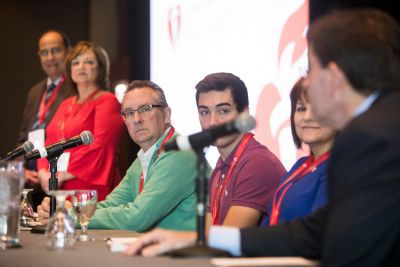
The 2018 American Heart Association (AHA)’s Resuscitation Science Symposium (ReSS), held November 9 to 11, in Chicago, Illinois, brought together thought-provoking research from basic science to clinical trials and frontline work in the public health space. Across 16 sessions, more than 50 oral presentations were given on topics ranging from a first-person narrative from a patient’s perspective of surviving cardiac arrest to the transcriptional profiling of the neuropro-tective mechanisms of inhaled nitric oxide in pediatric arrest. A total of 275 posters and 27 oral presentations on 40 topics were presented. Nine awards, including the inaugural winners of the Resuscitation Champion Award, were given.
The opening plenary session, “Dispatch-Assisted CPR: From Saving Lives to Implementation,” co-moderated by Joseph P. Ornato, MD, Virginia Commonwealth University, and Mary M. Newman, MS, Sudden Cardiac Arrest Foundation, was a multi-perspective panel that described the experience of an emergent cardiac arrest from the point of view of all stakeholders, including survivors, family members/ lay rescuers, a rehabilitation specialist, and a dispatcher. Each panelist described the same event from his or her unique perspective, painting a multifaceted picture of the faceless heroes on the other end of the phone who make the difference between life and death. The discussion emphasized the crucial parts played by all parties in successful outcomes for cardiac arrest.
During the closing session of ReSS, several presentations discussed issues surrounding improving CPR education and decreasing barriers to layperson response. In the United States, state legislation requiring CPR training in schools has resulted in more people trained and an increase in the number of patients discharged after cardiac arrest with favorable functional outcomes. Nevertheless, gender and racial gaps remain regarding lay rescuer response among those studied.
In an Arizona community, residents were engaged, trained, and asked to voluntarily take calls to allow researchers to study the response time of lay rescuers versus EMS providers for both chest compressions and AED delivery. In multiple simulated scenarios, lay rescuers demonstrated faster response times compared with EMS.
To read the full report click here.
